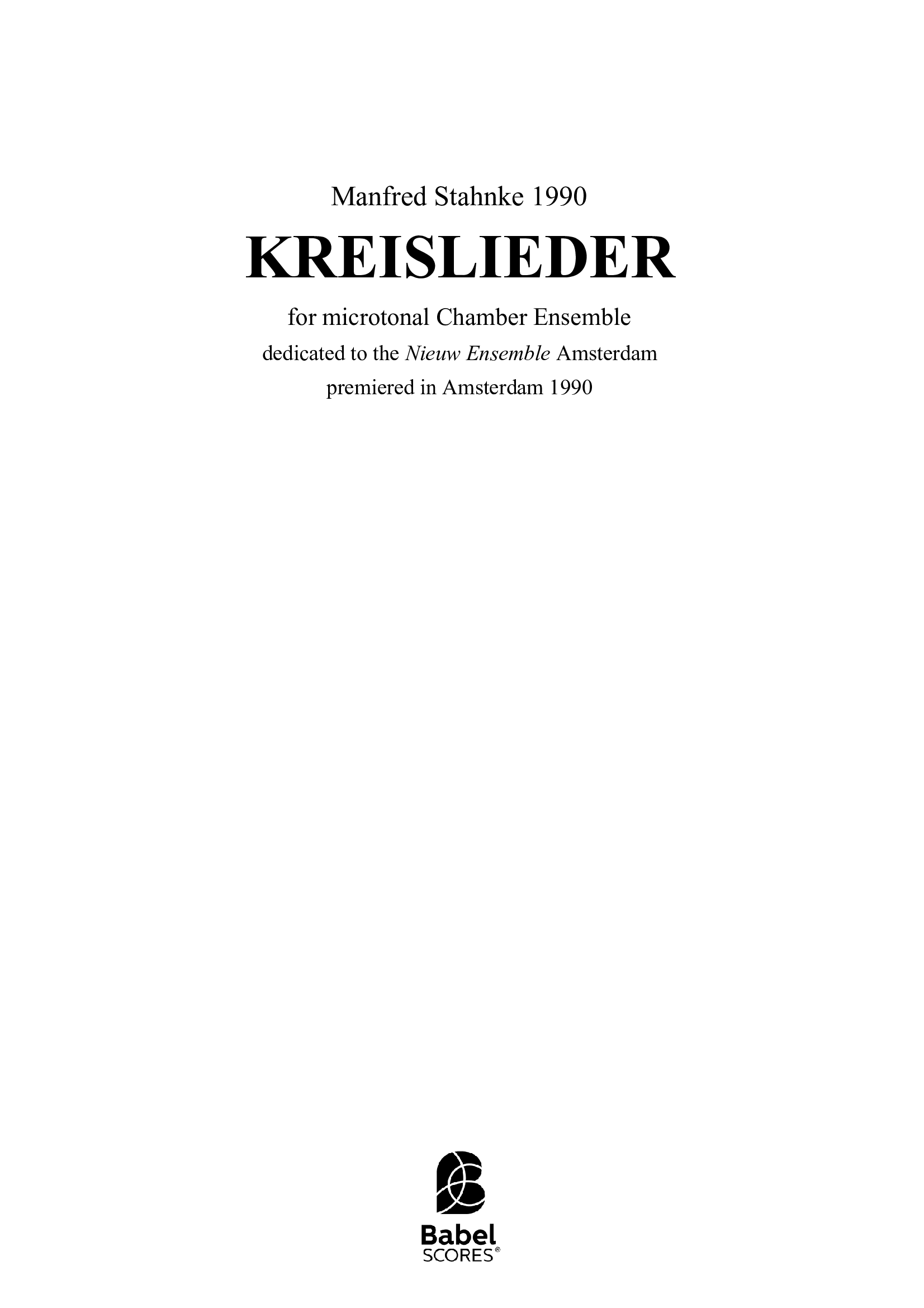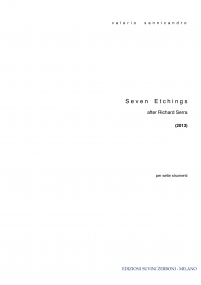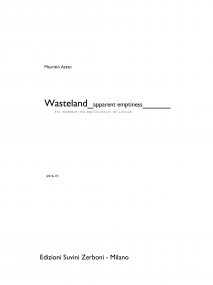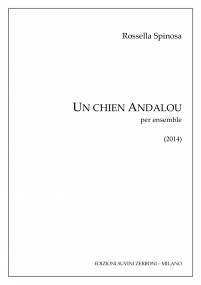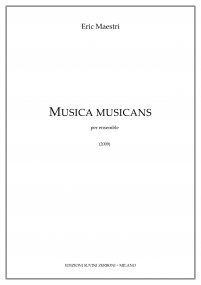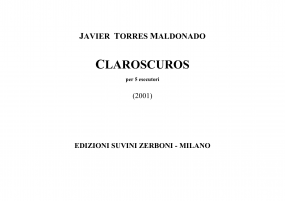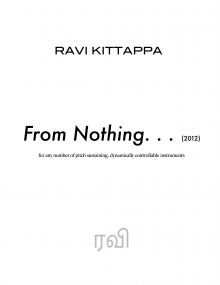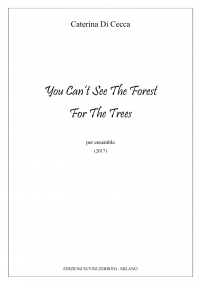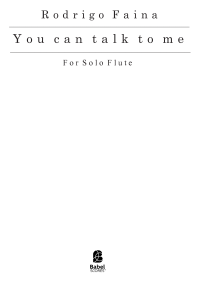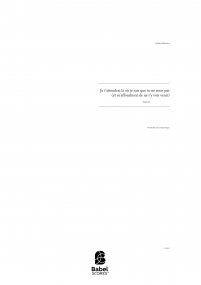KREISLIEDER
ISMN : 979-0-2325-7418-9
- Identifiez-vous pour créer une liste
Manfred Stahnke
KREISLIEDER
dedicated to Nieuw Ensemble Amsterdam
This work for ensemble makes use of an extreme tuning-non-system. The instrumentation is alto flute -30 cents, clarinet, guitar and harp, both in different scordaturas, percussion, violin, viola -30 cents.
To put it roughly, I could say, the tuning allows me close-to-equiheptatonic scales. "Equiheptatonic" would mean seven equal steps per octave, a kind-of diatonic world without semitones. Often African or Pacific music was considered this way, by Westerners. To grasp these musics better, we should consider the considerable ambiguity of these scales. Apparently these non- Western musics are considered by the players less tone-point-like, than multifold with its sound, its rhythm, its form, and all that in conformity with its pitches.
Simha Arom, the famous Israeli-French ethnomusicologist, just (1988) found out about the elasticity of Central-African "scales", visiting Pygmy tribes with a microtonally tunable Yamaha DX 7 II-FD synthesizer. I myself try to be elastic in accordance. My instruments in their asymmetric tuning appearance include also just intonation intervals, thirds and sevenths in this case, as well as a glimpse to our old-fashioned tempered system.
The players will never have the chance to play either in Just Intonation for long, or "tempered in 12 tones", or "equiheptatonic". They have to search locally for the prettiness of the non-system of my pitch possibilities.
I consider the arising wholeness of the piece as metaphor close to the multiplex nature of our physical world. Here a kind-of-chaotic multitude of layers between the microscopic and macroscopic world works together to form a kind-of living entity always finding balances to survive. Seemingly incoherent structures - let us think of living beings - interact nicely to form a unity of a second layer. Our brain could be considered as a heap of modified bacteria. Or think of an anthill, where every ant cooperates like particles in a thinking brain.
Very close to my ideas about this, I build the entity of Kreislieder. Rhythm, and the arising form, coming from this, cooperate with the tone colors, arising from my pitch world. We should listen to the piece from far away. Then a hyperstructure arises, which may paint a picture of a lost innocent country.
dir. Joel Bons
Pages - 32

